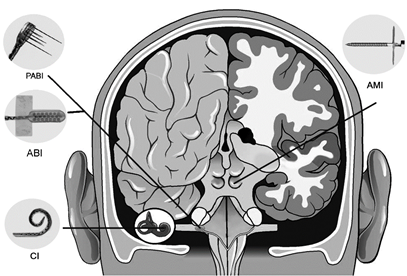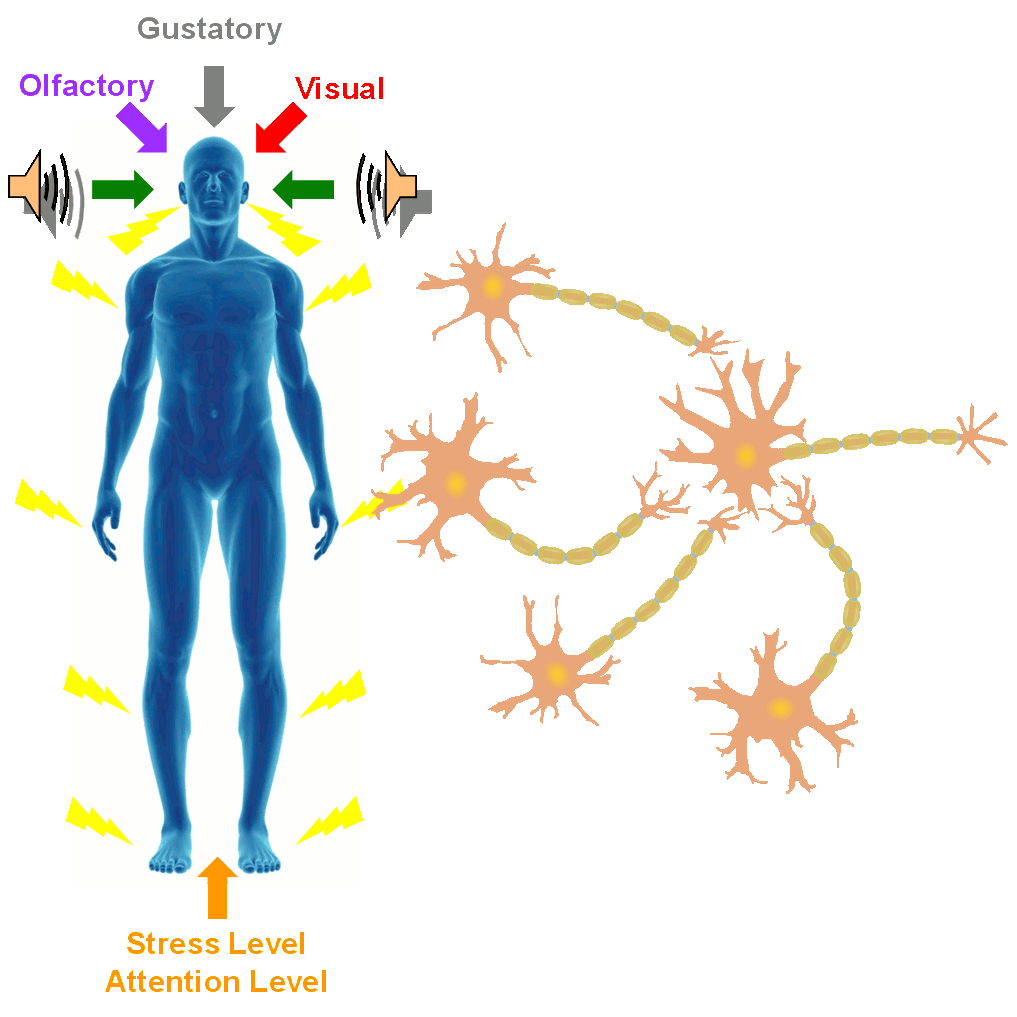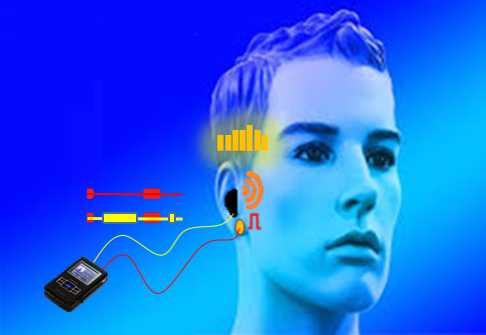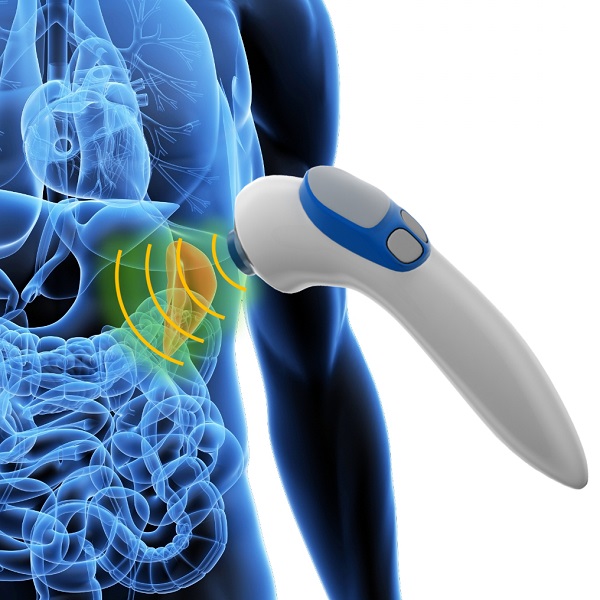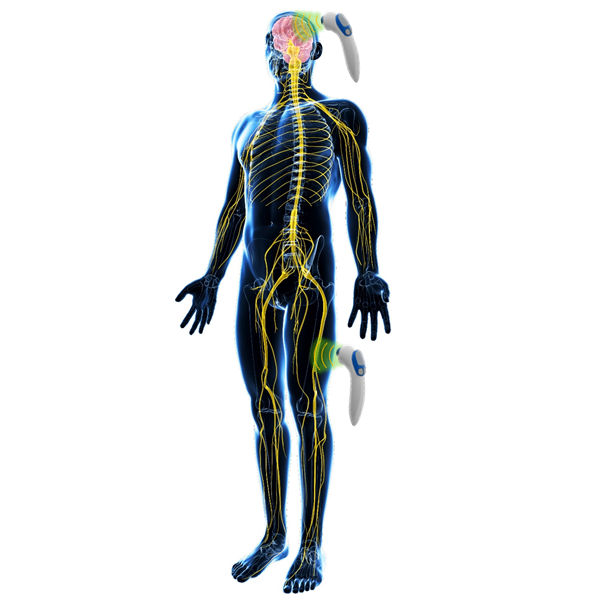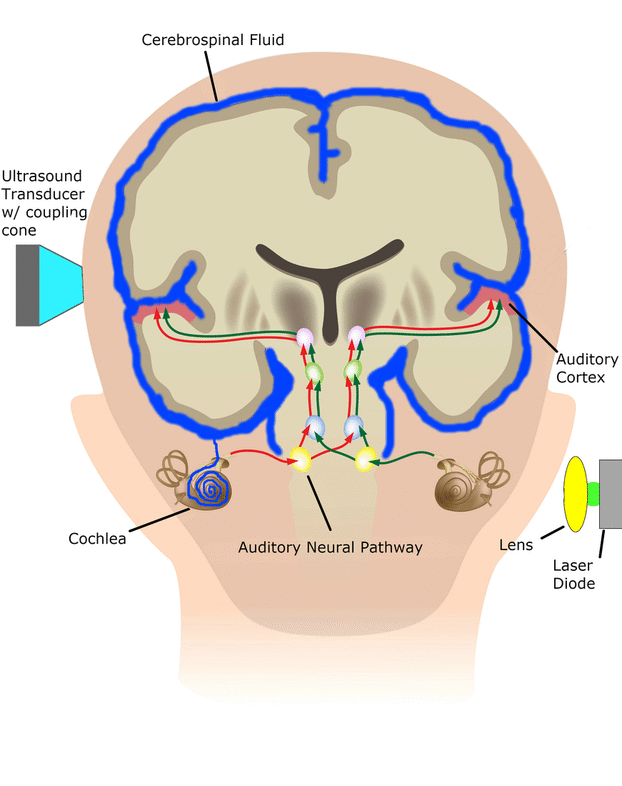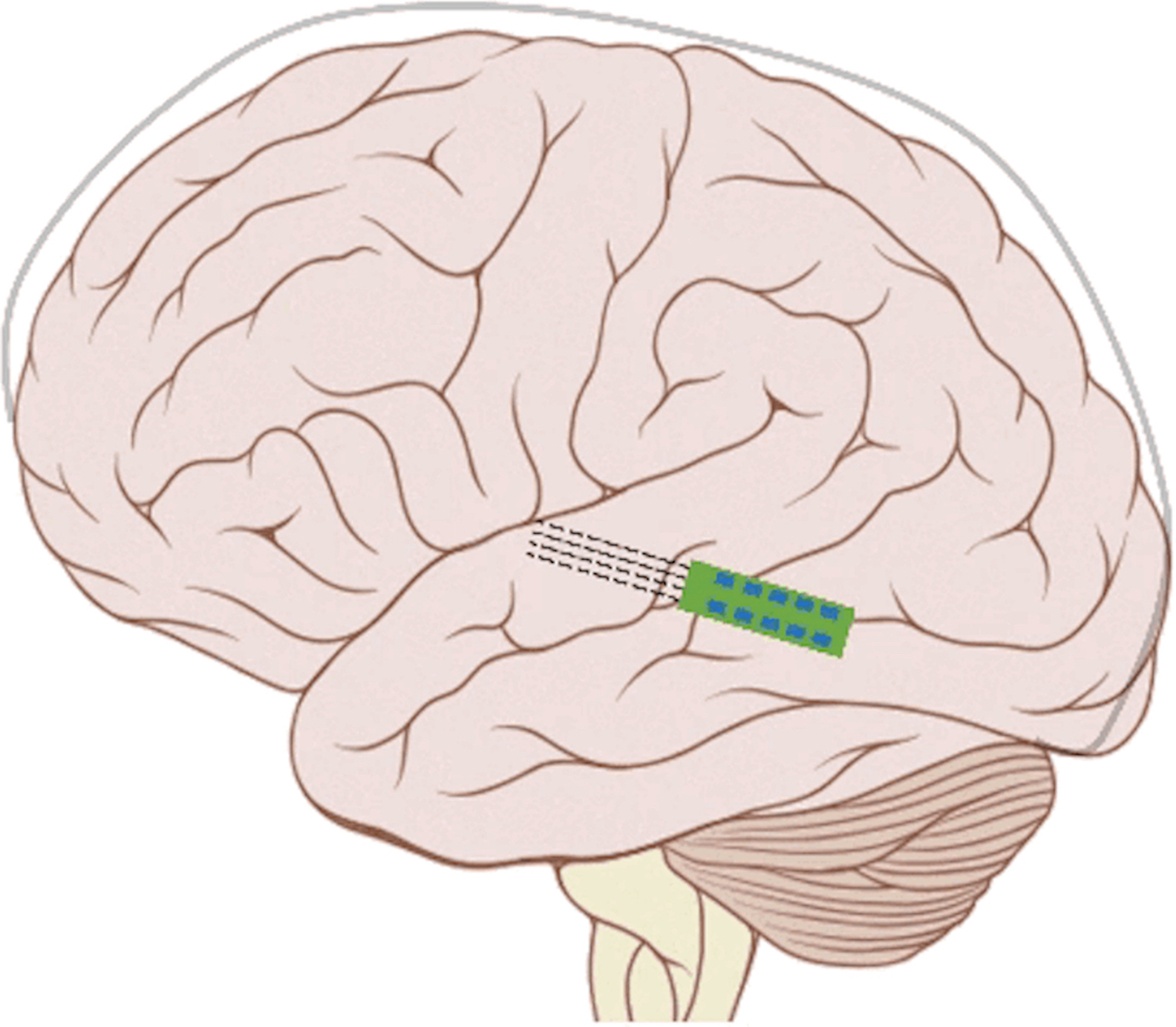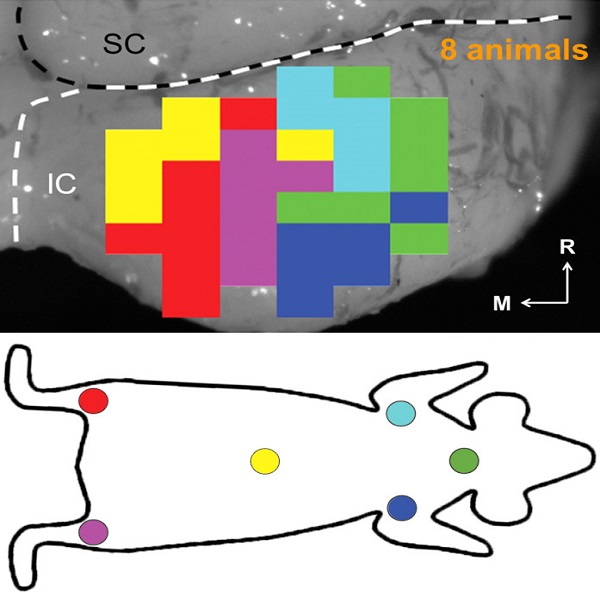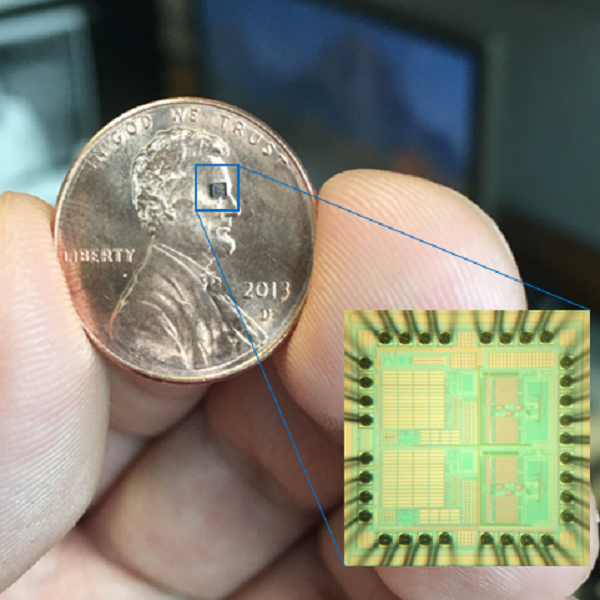Ultrasound Modulation of Brain and Nerves
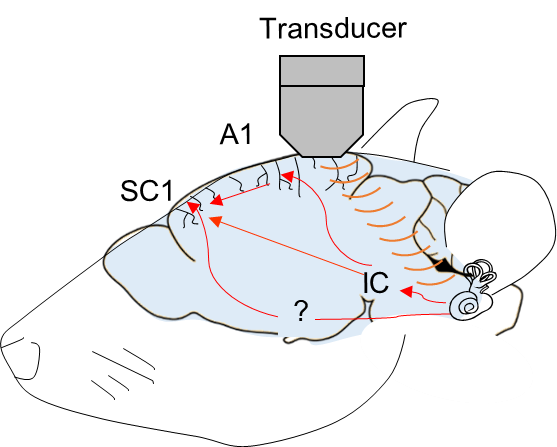
Ultrasound (US) can noninvasively activate intact brain circuits, making it a promising neuromodulation technique. However, little is known about the underlying mechanism. In the SONIC Lab we apply transcranial US and perform brain mapping studies in guinea pigs using extracellular electrophysiology. We have found that US elicits extensive activation across cortical and subcortical brain regions. However, transection of the auditory nerves or removal of cochlear fluids eliminates the US-induced activity, revealing an indirect auditory mechanism for US neural activation. US likely vibrates the cerebrospinal fluid in the brain, which is continuous with the fluid in the cochlea via cochlear aqueducts; thus, US can activate the ascending auditory pathways and other non-auditory regions through cross-modal projections. This finding of a cochlear fluid-induced vibration mechanism challenges the idea that US can directly activate neurons in the intact brain, suggesting that future US stimulation studies will need to control for this effect to reach reliable conclusions.
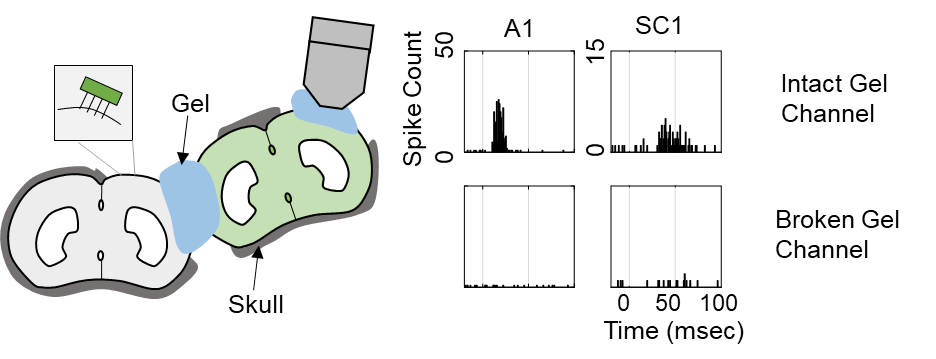
We submitted the manuscript to bioRxiv together with a companion paper from our colleagues at Caltech (Drs. Tomo Sato, Mikhail Shapiro and Doris Tsao) demonstrating that US can elicit strong brain activity and motor responses (e.g., limb movements) through an indirect auditory activation mechanism thorugh the cochlea. These papers are listed below:
Publications:
Ultrasound Produces Extensive Brain Activation via a Cochlear Pathway https://www.biorxiv.org/content/early/2017/12/22/233189
Ultrasonic Neuromodulation Causes Widespread Cortical Activation via an Indirect Auditory Mechanism https://www.biorxiv.org/content/early/2017/12/16/234211
Funding: MnDRIVE Brain Conditions Innovations Grant, MnDRIVE Fellowship Program, NSF IGERT Graduate Fellowship Program, SONIC Lab Discretionary Funds
Ultrasound Stimulation of Peripheral Nerves
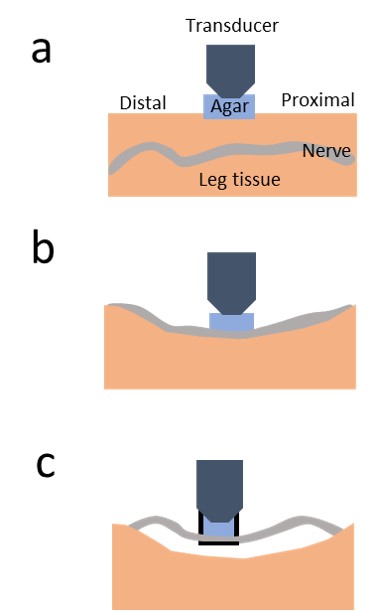
Nerve modulation has been possible using neurochemicals or electrical stimulation (e.g., high frequency pulse trains). Recently, ultrasound (US) has emerged as a potential approach for focused and noninvasive modulation of the brain, peripheral nerves and end-organs. Multiple in vitro or non-invasive in vivo studies on the sciatic nerve have reported encouraging results of US stimulation or modulation of nerve activity. We further investigated if US can activate or modulate the sciatic nerve in an in vivo preparation in guinea pigs. We created a setup to directly modulate the sciatic nerve while minimizing confounding effects caused by activation of somatosensory receptors or surrounding tissue with US, and we explored a wide range of stimulation parameters. We found that: 1) US can activate receptors on the surface of or within the leg with different stimulus parameters, based on spike activity measured in the somatosensory cortex, 2) US stimulation does not appear to directly activate the sciatic nerve, based on direct recordings from the nerve during stimulation, and 3) US stimulation can modulate (i.e., enhance or suppress) nerve activity with specific parameters, suggestive of different neural mechanism of activation (i.e., mechanical versus thermal effects).
Funding: DARPA
Collaborators: Sarah Offutt, PhD (Medtronic); Bryce Binstadt, MD, PhD (Pediatric Rheumatology, University of Minnesota);
